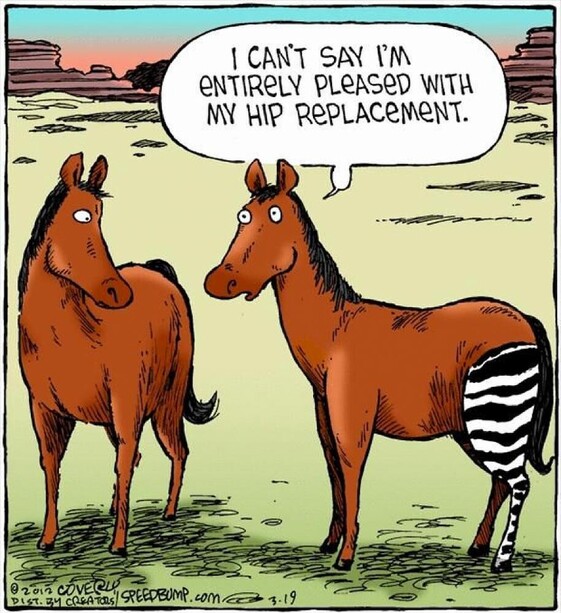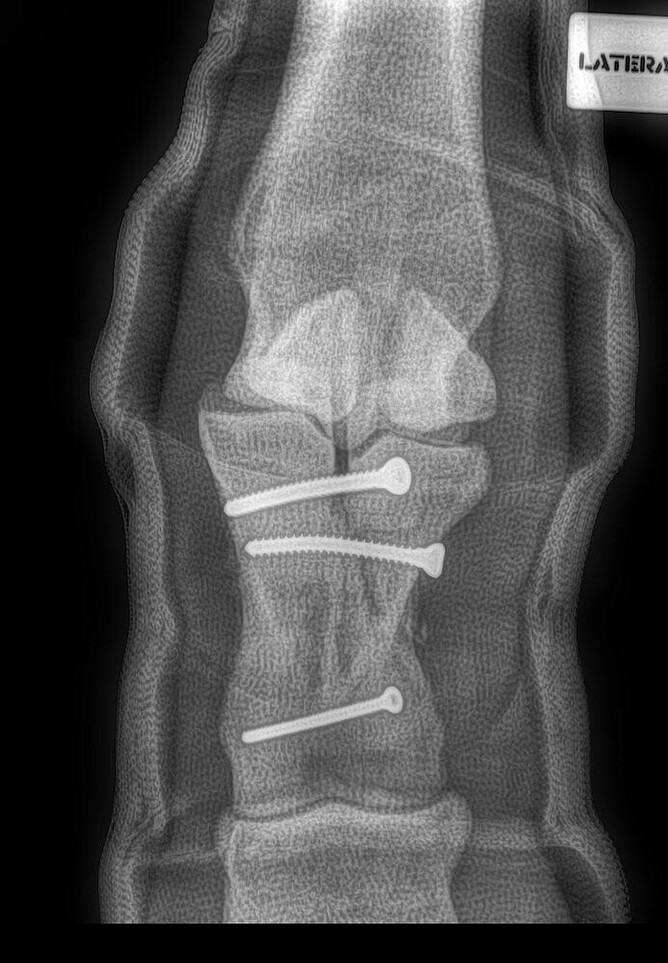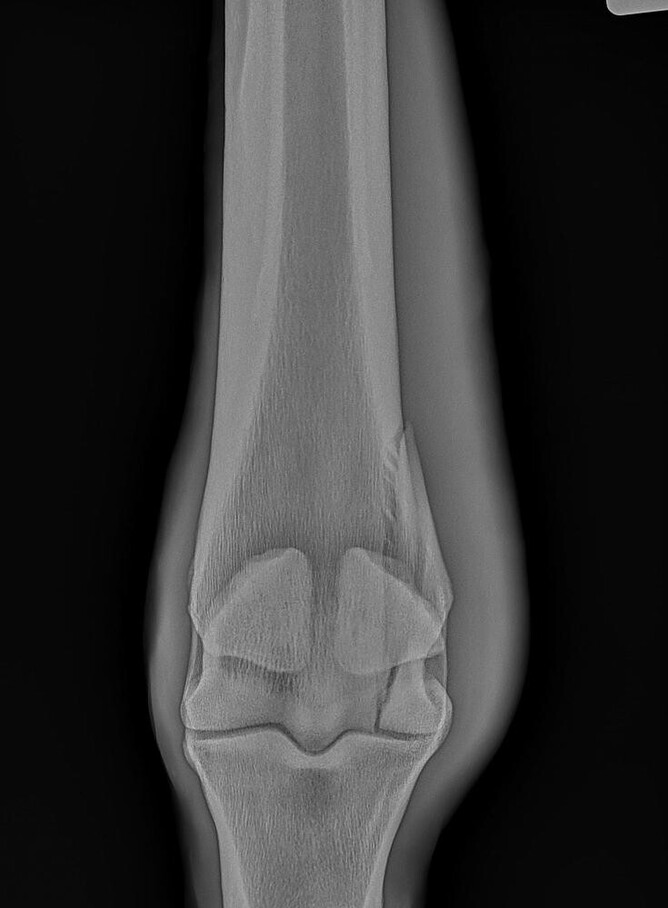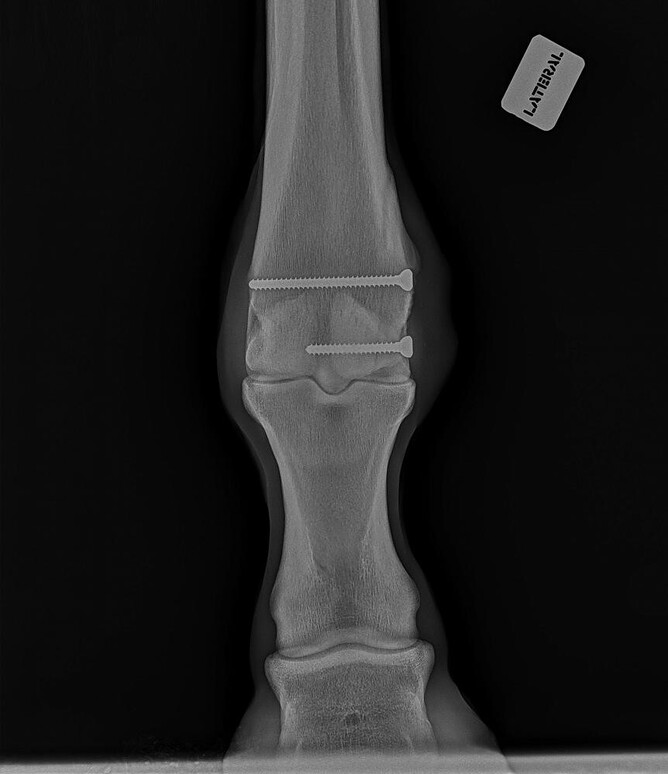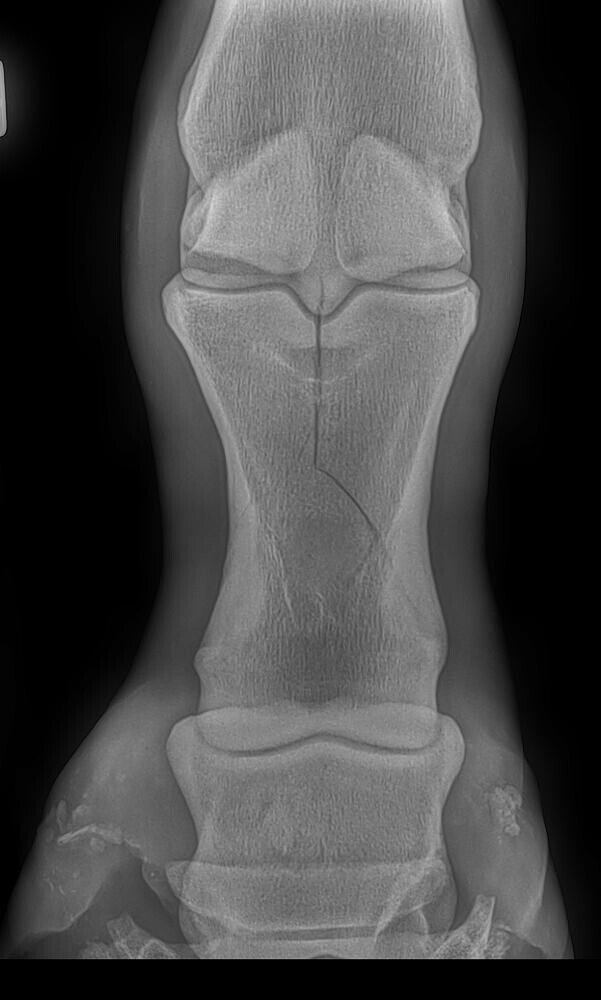Horse owners often ask ‘how is it some horses with broken legs can be fixed and some can't’. This is an interesting question as even though we are in the 21st century; surgical repair for major leg fractures is still very difficult. There still remains a large number of fractures that are not easily repaired.
In many instances; a fracture, even if repaired can mean the end of an athletic career and this is often a reason owners elect not to attempt to repair.
Horses usually break bones when performing; exerting themselves or travelling fast. The mere act of slowing up once a break occurs is not easy for 500kg going 30 km per hour. Supporting soft tissue structures like ligaments can sustain damage as well as a bone during this process. Damage to supporting structures as well as the bone complicates healing. A good blood supply to the fracture is critical for healing. Blood vessels are often associated with supporting soft tissue structures like ligaments and tendons so if they are damaged so is the legs blood supply.
To heal; bone fragments need to be rigidly held together where movement is minimised. Breaks resulting in multiple fragments where there is no clear bony column supporting the two ends of the broken bone leave the limb unstable. Plates long enough and strong enough to span large fragmented breaks are not commonly available. Specialised bone plates are available but some stocks are not held in the country and need to be sourced from overseas.
So called ‘open’ fractures are where the skin is opened and the bone ends exposed to hair, soil, etc so that the fracture is contaminated. The presence of infection at the surgical site can mean poor healing and bacteria like to grow on metal implants like plates and screws. Contamination at the fracture site drastically alters the chances of a good heal.
The sheer weight of horses can test the strength of plates and screws. Plates can bend and screws break. This is especially so when horses are recovering from anaesthesia - it's very hard and dangerous to hold them down or assist them to stand after surgery.
Figure 1 shows what can happen to a repair on anaesthetic recovery. If they struggle and flail, the repaired leg can be pulled apart or get damaged. In an effort to minimise the issues with anaesthetic recovery; many leg fractures are performed standing using sedation and local anaesthesia to numb the area. While this is technically more difficult, horses do not have to recover from anaesthesia.
The repair of the fracture shown in Figure 2 was performed on a standing horse. The finished repair is in Figure 3. Figure 4 shows standing screw placement into a knee fracture.
Some horses do not cope well with being confined and having their leg cast or heavily bandaged - these types of horses can be distressed and their natural response is to escape - trying to use their damaged leg.
However, luckily there are some breaks that we can fix. Incomplete cracks where the bone is not displaced like cannon bone or pastern fractures are among the commonest fractures we repair. Figure 5 shows a simple pastern fracture. The finished repair is seen in Figure 6. Some of the complex fractures in foals that have a smaller bodyweight are amenable to the more commonly available bone plates. Some fractures like pedal bone breaks heal very well with just confinement.
So while a number of traditionally difficult to repair fractures can now be tackled we still have a long way to go in fixing broken bones.
- Brendon Bell
